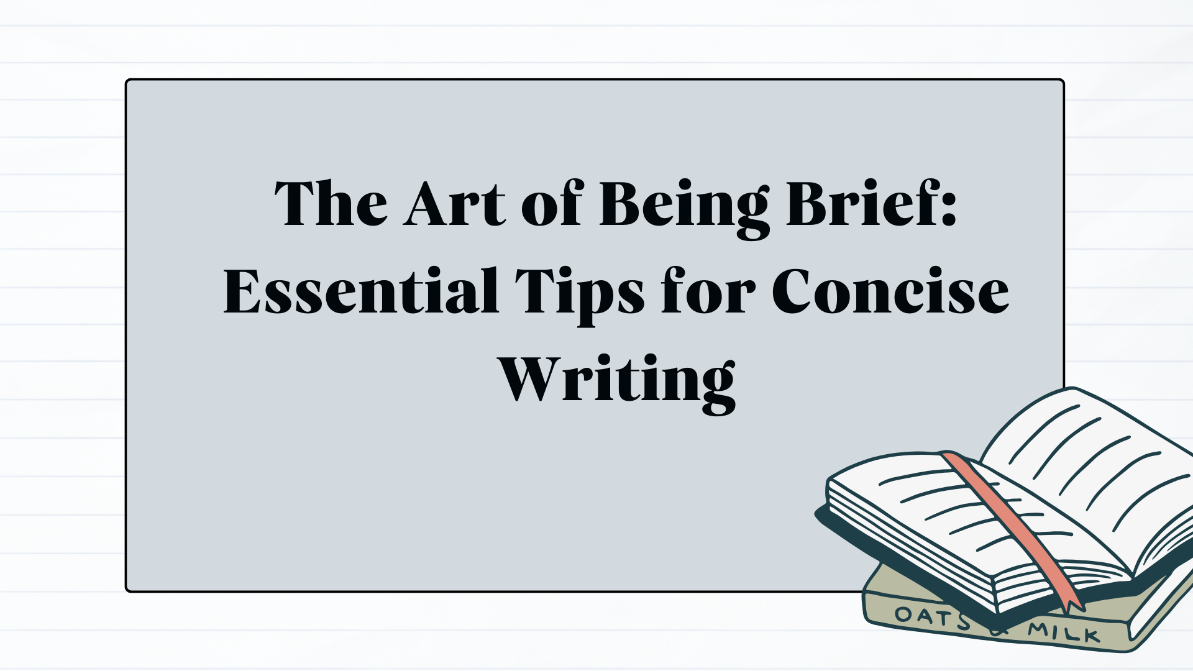Concise writing is a useful skill that you should learn. It helps you convey your message without writing excessively and spanning the text over a lot of words. If your writing is not concise, it means that it has a lot of words in it, which basically means that it will make your readers bored as they go through it. Just check out this really long last sentence that we wrote.
That’s not concise.
It’s somewhat sesquipedalian.
But that sentence ↑ is concise because it has a few words and carries a lot of meaning…although that one word is egregiously difficult.
If you want to make your content like that, you’re in the right place. In this post, we’re going to be looking at some tips on how to do that.
1. Create a blueprint for your content first
Of course, this applies only in situations where the content you’re writing is long enough to warrant a blueprint (which is the fancy word we’re using for “outline” today).
The benefit of making a plan for your content before you get started is that it helps you stay focused. You have a good idea of what you want to write and when to write it, and due to that, you’re not likely to branch off on a tangent.
When you don’t do that, you don’t write irrelevant stuff in the content. That, in turn, leads to your content being concise and to the point.
You don’t have to be very detailed about the outline or the blueprint. Just write down the headings and the sub-headings that you think you should cover in the content.
2. Avoid writing fluff in the content

Sometimes, putting a bit of fluff in the content can help make it a bit more conversational. Consider the example of a joke or an anecdote that doesn’t add value to the content but makes it more appealing to read.
In normal cases, i.e., when you’re not specifically writing concise content, doing this can be fine in some capacity. But when your focus is particularly on making the content concise, you can’t afford to add even a bit of fluff in there.
To make sure that no valueless content exists in the content, you should first be careful when writing the sentences the first time. Then, you should also read it through a few times after writing it to see if you’ve unknowingly made a mistake. Should you find such accidental fluff, you can simply remove it or substitute it with something useful.
3. Utilize pictures and illustrations where possible
This applies only if the content you’re writing is permitted to contain pictures and illustrations. For example, you can follow this tip if you are working on a blog or a book. But if you are writing an essay that has an express prohibition on containing anything but text, this won’t work out for you.
We’ve heard the expression, “A picture is worth a thousand words.” In a lot of situations, you can wind up writing an explanation of a few hundred words—an explanation of something that can be easily explained through a simple diagram or image.
If you opt to add the image(s) in your content, you can make do with less and less text. As a result, your content can become more concise, albeit a bit longer in literal length, due to the images.
4. Use online tools to shrink your text where needed
Sometimes, you may end up writing some really long content. You could find it to be a bit excessively lengthy, but at the same time, you could be at a loss as to how to shorten it.
In situations like these, using AI tools to summarize text can be a good solution. You can use an AI-driven summarizer to shrink your text so that the main points it contains are still conveyed while the length becomes less menacing.
Online tools like this are made to analyze the provided text and to understand the core idea that it contains. After that, the tool generates a summary of the text by either using the abstractive technique or the extractive technique. Nowadays, most tools go with the abstractive technique, which is basically the method of summarization in which the summary contains words and phrases different from the original text.
Of course, as is the case with most online tools and software, the performance and working of the summarizers have to be checked and monitored. In other words, whenever you use the tool, you should carefully check the output to see if there are any problems or issues in the output or not.
Final thoughts
Concise writing is not that hard. It’s actually easy since you have to do less.
However, for people who are in the habit of writing really long-drawn texts, it can be a bit of a challenge. In the post above, we’ve talked about some tips and steps that can be followed to create brief and concise content.
To sum it up, you should take care to:
- Plan your content out first
- Avoid writing fluff
- Add pictures instead of long explanations
- Using online AI summarizers
Also Check: What are the Five Qualities of Good Writing?






